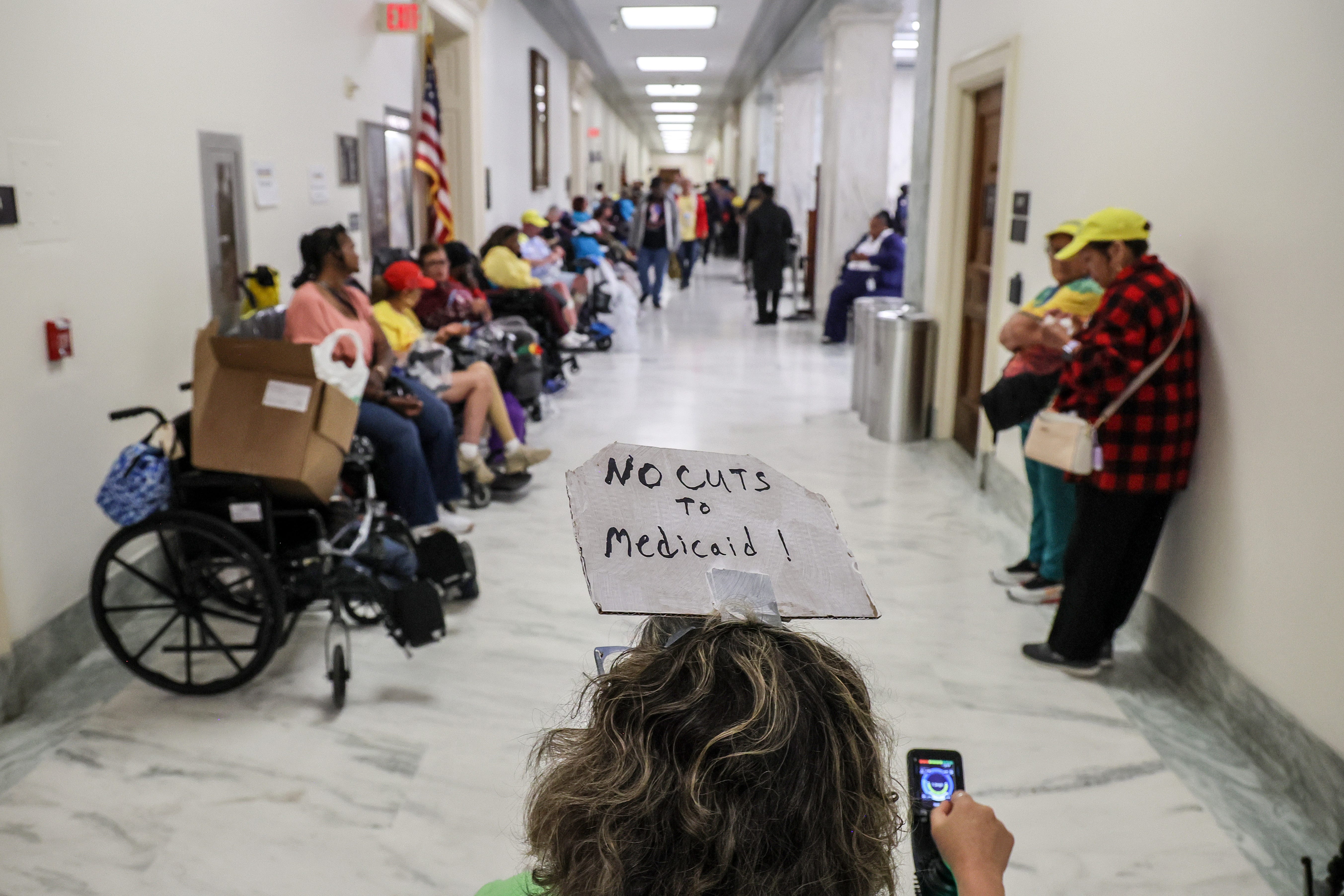
Jemal Countess/Getty Images for Protect Our Care
House Republicans’ latest budget plans suggest big cuts could be coming to federal Medicaid funding — and it could mean less access to healthcare for millions of Americans.
To understand who might be vulnerable, Business Insider used publicly available enrollment and demographic data to create a picture of the typical recipient. The results: Children, lower-earning millennials, and those in Western and Northeastern states could be particularly impacted by any cuts.
Over 79 million Americans, or just under a quarter of the population, receive coverage under either Medicaid or the Children’s Health Insurance Program, which is eligible for children through Medicaid. Medicaid and CHIP are paid for by a mix of federal and state funding.
The House Energy and Commerce Committee’s proposal was released on Sunday and includes about $715 billion of cuts over the next decade from Medicaid and the Affordable Care Act. On Wednesday, House Republicans from the committee voted to advance the proposal, which will go to a full House vote. That might mean that 8.6 million people could see their health insurance coverage axed, according to an analysis released May 7 by the nonpartisan Congressional Budget Office.
Who receives Medicaid
Medicaid enrollment data from October 2024 and July 2024 population estimates from the Census Bureau indicate that at least 10% of residents in nearly all states relied on Medicaid or CHIP, with New Mexico and California leading.
To get a picture of the demographic breakdown of Medicaid beneficiaries, Business Insider analyzed individual-level data from the Census Bureau’s 2023 American Community Survey assembled by the University of Minnesota.
Children are highly overrepresented among Medicaid recipients: People under 18 make up just about a fifth of all Americans, but nearly 40% of Medicaid recipients. Conversely, prime working-age Americans — who are between 25 and 54 — are underrepresented among Medicaid recipients, compared to the population at large. The average Medicaid recipient is around 32 years old.
Medicaid recipients were unemployed at a higher share than the rest of American adults; around 40% were employed, compared to around 60% of all adults.
A far greater share of Medicaid recipients was not in the labor force, meaning that they’re not working or actively looking for work. There are many reasons people may be out of the labor force — they might need to provide care to a child or someone else, or have simply thrown in the towel on finding work.
Accordingly, Medicaid recipients are lower-earning: The average annual income among adults on Medicaid was $21,654, less than half of the average income of $55,050 for all adults; around a third of all Medicaid recipients lived below the poverty line, compared to 13% of all Americans.
Adult Medicaid recipients were also less likely than the total American adult population to be married, and a slightly higher share is separated or divorced. The greatest share of Medicaid recipients is single, and Medicaid recipients are also slightly more likely to be female than male.
Compared to all American adults, Medicaid recipients were also more likely to have less than a high school education; just under 10% have a bachelor’s degree as their highest level of education.
Similar to the wider American population, the largest share of Medicaid recipients are white; however, Black and Hispanic Americans are disproportionately represented among American adults receiving Medicaid. The analysis also showed that immigrants are underrepresented among Medicaid recipients.
What’s on the table now
The latest proposal from the House Energy and Commerce Committee, which oversees Medicaid and Medicare, includes increasing Medicaid user fees, more frequent income verification, and adding work requirements for lower-income adults without children — which would go into effect in 2029.
The proposal would aim to crack down on using state taxes for hospitals to secure more federal funding. It would also require some copayments for doctors’ visits for Medicaid recipients who make more than the federal poverty limit.
In addition, the proposal looks to reduce Medicaid expansion rates for states that cover people living in the country illegally, as well as prevent Medicaid from funding Planned Parenthood and other abortion providers.
It’s a less severe proposal than some commentators expected. The GOP committee members opted not to lower the federal Medicaid matching rate or implement a per capita spending cap, which were pushed for by some GOP leaders.
Republicans have been split on the best path forward for Medicaid cuts, as some represent districts that have among the highest Medicaid reliance rates.
Of course, Trump’s big, beautiful bill is far from a guarantee. The coming weeks and potentially months of negotiations likely mean that the final iteration will reflect what Republicans can agree on cutting. For now, though, Medicaid seems to be in their crosshairs.
Do you have a story to share about potential Medicaid cuts? Contact these reporters at [email protected] and [email protected].
The post These are the Americans who could be most affected by the GOP’s planned changes to Medicaid appeared first on Business Insider.




